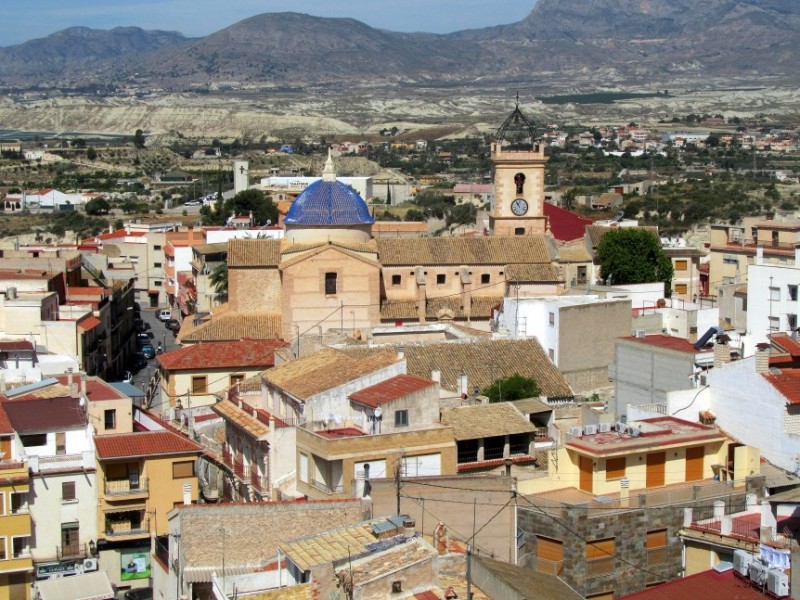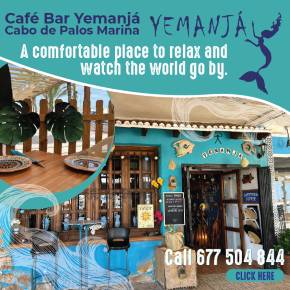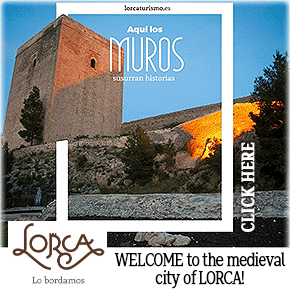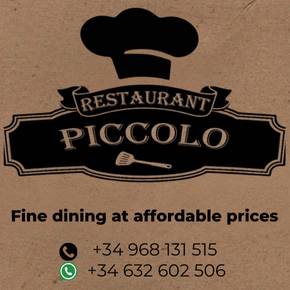

Guidelines for submitting articles to Mazarron Murcia
Hello, and thank you for choosing Mazarron Murcia to publicise your organisation’s info or event.
Mazarron Murcia is a website set up by Murcia Today specifically for residents of the urbanisation in Southwest Murcia, providing news and information on what’s happening in the local area, which is the largest English-speaking expat area in the Region of Murcia.
When submitting text to be included on Mazarron Murcia, please abide by the following guidelines so we can upload your article as swiftly as possible:
Send an email to editor@spaintodayonline.com or contact@murciatoday.com
Attach the information in a Word Document or Google Doc
Include all relevant points, including:
Who is the organisation running the event?
Where is it happening?
When?
How much does it cost?
Is it necessary to book beforehand, or can people just show up on the day?
…but try not to exceed 300 words
Also attach a photo to illustrate your article, no more than 100kb

A walking tour of Abanilla
Spend a morning in the characterful town of Abanilla
Abanilla is an attractive and characterful town, its compact nature making it the perfect destination for a morning visit, followed by a good lunch and an optional walk in the countryside afterwards.
Those who prefer to participate in guided visits can join in with one of the cultural tours of the town centre organised by the tourist information office throughout the year, although these are generally run in Spanish. The tourist office can organise tours in English by prior arrangment for groups.
This short walking tour takes in the most important monuments in the town and allows time to stop off and enjoy a coffee or purchase local products en-route.
The first stop off-point should be the local tourist office, where maps of the town can be collected, points to visit marked on the map, and information about where to eat and walking routes for the afternoon gathered if required.
The tourist office is located on Calle Pío XII (tel 968 684 075 / 680 204 720) and is open Monday to Friday from 9.15am to 1pm (October to June) or from 8.15am to 2pm (July to September).
Those who prefer to plan in advance may find it interesting to read the history of Abanilla as it helps to clarify the historical detail behind the monuments of the urban area (click History of Abanilla) and you’ll find more detailed information about each of the locations mentioned below by clicking the links provided.
The recommended route:

Casa Pintada (Casa Pintá)
The route starts at the Casa Pintada, and those who like to start the morning with a coffee will find a popular cafeteria with external seating at this point. This original noble home was built in the 16th century outside of the Mediaeval walls which once encompassed Abanilla, although much of the building seen today dates to the 17th and 18th centuries, with the building having undergone a full restoration in 2006, and apart from its distinctive colouring the façade also features a remarkable main doorway surrounded by a rectangular frieze and topped by the coat of arms of the family which lived here, los Enríquez. The rest of the façade is actually fairly plain, apart from the curious round pinnacles over the doorway, but it is an impressive demonstration of the wealth which existed as a result of agriculture around Abanilla in centuries gone by and the typical style of property of this period. Click for more information about Casa Pintada.

Casa de la Encomienda
Close by is the Casa de la Encomienda
This building was the headquarters of the administrative and business operations of the military-religious Order of Calatrava which effectively “owned“ Abanilla and it was here that the members of the Order received their “diezmo” taxes from the local population. These taxes were usually paid as a proportion – and quite a large proportion! – of the production on the agricultural land around Abanilla, and therefore space had to be provided to store large quantities of cereals, wine, olive oil, fruit and many other items of food and drink, the Pósito or grain store, being another name by which the building is known.
It was also the home of the “Comendador” who oversaw operations of the Order in Abanilla.
Today it is the home of several municipal offices and the town library; a peek inside the library shows the arched structure of the ceiling and in the basement, now used as a tuition room, is an impressive brick ceiling, although this can be difficult to see if the lights are off and the door locked. Externally, the building is very typical of storehouses built in other areas of the Murcia Region and is similar to buildings of the same period in Alhama de Murcia and Calasparra. Click for more information about La Encomienda.
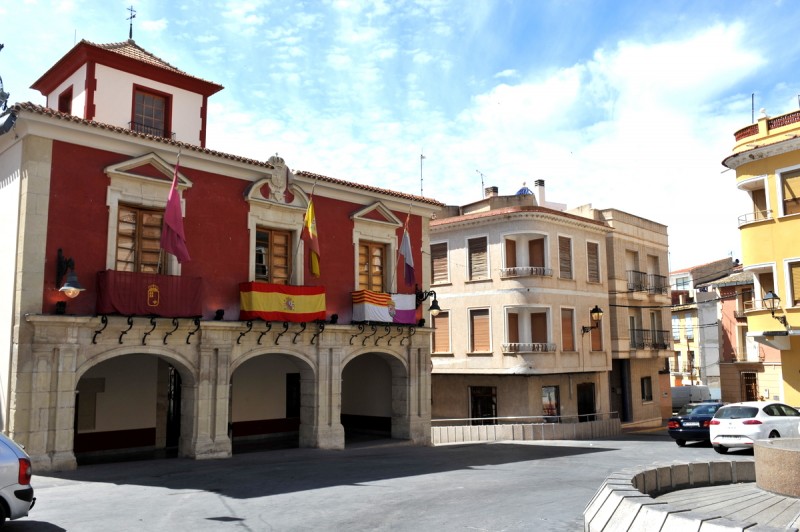
Ayuntamiento
The Plaza de la Constitución is home to the Ayuntamiento (1762) or town hall, which conserves several of the architectural features typical of the period, with stone arches, ironwork and mouldings which typify buildings of this period. Click for more information about Ayuntamiento Abanilla.

Casa Cabrera
Although this building can only be viewed externally from the street, it is a vast structure containing an impressive internal courtyard, and although sub-divided into residential apartments today, was formerly a substantial private residence.
The stone coat of arms of the Requena/Cabrera family above the main door is one of the largest in the Region of Murcia, (measuring 315 by 85 cm) and features the goat (“cabra”) associated with the lineage. Click for more information about Casa Cabrera

Iglesia Parroquíal de San José
The Iglesia Parroquial de San José (1712) is opposite the Casa Cabrera and is a typical Baroque church of the period.
In 2012 minor restoration work was carried out to mark the third centenary of the building, following major restoration after the civil conflict in Spain which lasted from 1931 to 1939, during which the church was stripped of almost all its archives, religious artwork and sculpture, ornaments and items of worship: in 1964 the ceiling required considerable repairs and re-decoration, and in 1971 the floor was replaced, leaving the original (and the burial stones it contained) concealed in all but one of the side chapels and in the main entry porch.
Some of these gravestones marked the last resting places of the Cabrera family, who were descendants of Ramón de Rocafull, the cousin of King Jaime I “el Conquistador” who quelled the Moorish rebellions following the Reconquist, when the armies of Castile y León and Aragon ousted the Moors who had occupied southern and central Spain for 500 years. It was the Rocafull family who eventually ceded Abanilla to the Orden de Calatrava, and the cross of the Order is featured in the decoration both inside the church, especially on the domed ceiling, and outside, above the main and side entrances.
The colourful altar screen includes representations of San José with the young Jesus and the Virgen de la Inmaculada Concepcíon, “la Purísima”. Similar in design to the altar screen of the church of San Miguel in Murcia, the central panels are supported by cherubim and Solomonic columns, suggesting that it may also be the work of Jacinto Perales and his brother Antonio.
A side chapel is home to the silver reliquary containing pieces of the lignum crucis ceded to the municipality in 1943 after the original reliquery disappeared at the start of the Spanish Civil War. The Cross of Abanilla is synonymous with the identity of the town and references to it can be seen everywhere.
The main fiesta in Abanilla are linked to the veneration of the cross, and the reliquery is carried in Romería at the beginning of May every year. Click for more information about San José Abanilla
Exiting the church, the other focal point for the local fiestas can be seen straight ahead, with a sculptural piece representing the Moors and Christians opposite the main entrance.

Public wash-house.
However, one of the most interesting locations in the town is concealed behind the church; the only public wash-house still operational in all of the Region. In an era of modern conveniences, this is a sobering reminder of how hard the life of a woman was before the arrival of electricity, running water in the home and washing machines. Click for more information about Public wash house Abanilla.

Fountain
From this point, return to the town hall and continue up Calle Mayor to the Plaza de las Cortes, about 30 metres uphill, in which a magnificent tiled fountain can be seen, showing idealistic representations of rural bliss and the agricultural heritage of the municipality, including the May Romería with the Cross of Abanilla.
Although this is a decorative fountain today, it was first installed as the main source of drinking water for the town in 1792 after the previous fountain in the Vereda de la Cañada, behind the Moorish castle, dried up, and is another reminder of how hard life would have been for the women of the town, who had to carry water for family use back to their homes from this one central water source every day; no hot showers, washing machines or tap water until the latter years of the twentieth century! Click for more information about Fountain Abanilla.

Lugar Alto
From here the only way is up, and those with the energy can climb up to the highest viewing point above town and the Lugar Alto (which means high point) formerly the site of the Moorish fortifications which once offered shelter to the farming community and today is the home of the imposing figure of the Sagrado Corazón de Jesús.
En-route, take a look at the houses near to the top of the hill; these are cut into the hillside and are typical of the cave houses found in southern Spain.
Lugar Alto is certainly the place to come for superb views of the town below and to gain a feel for the sierras and areas surrounding it, before descending down some fairly steep steps to the town below and a well-earned coffee and cake. Click here: Lugar Alto
Don´t forget to purchase locally produced olive oil and bread baked in a wood-fired oven at one of the panaderías which still make their bread using traditional wood ovens; the big giveaway is the stack of wood outside of the building!
Click here for further information about the Abanilla municipality, including its natural attractions: Abanilla






